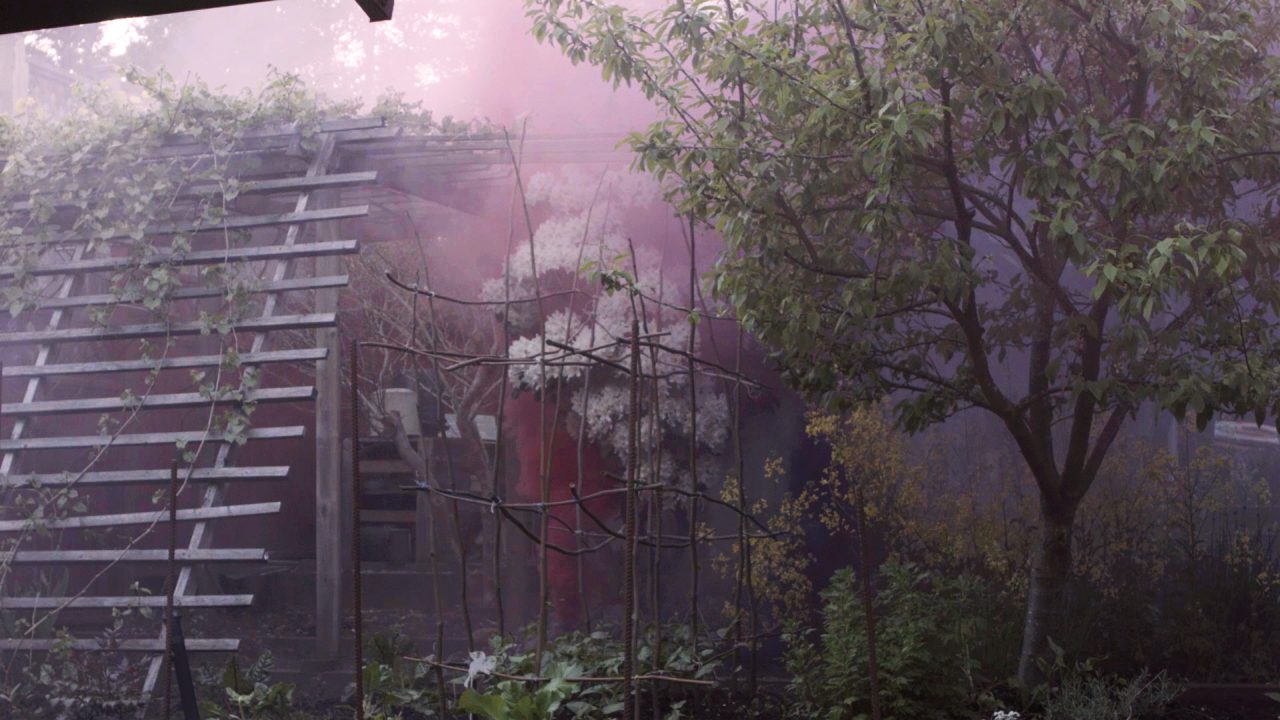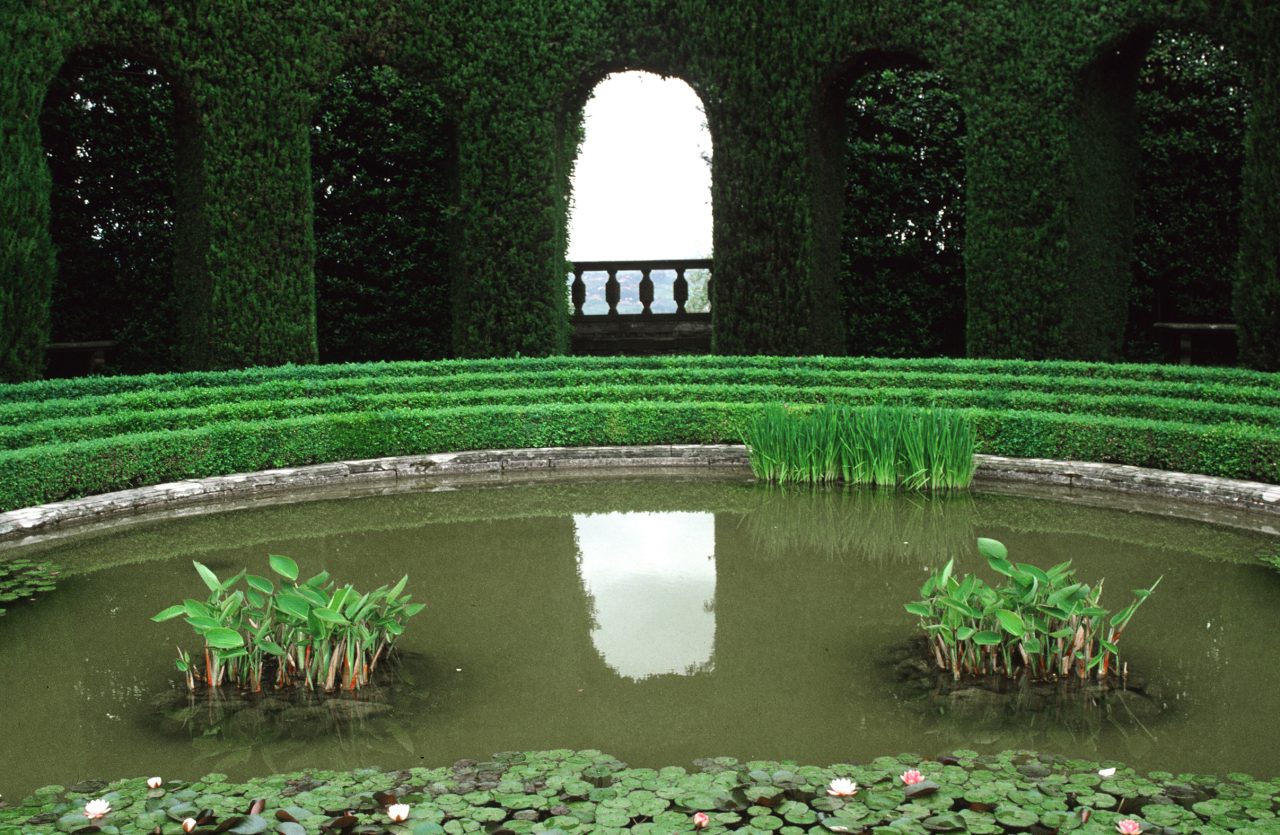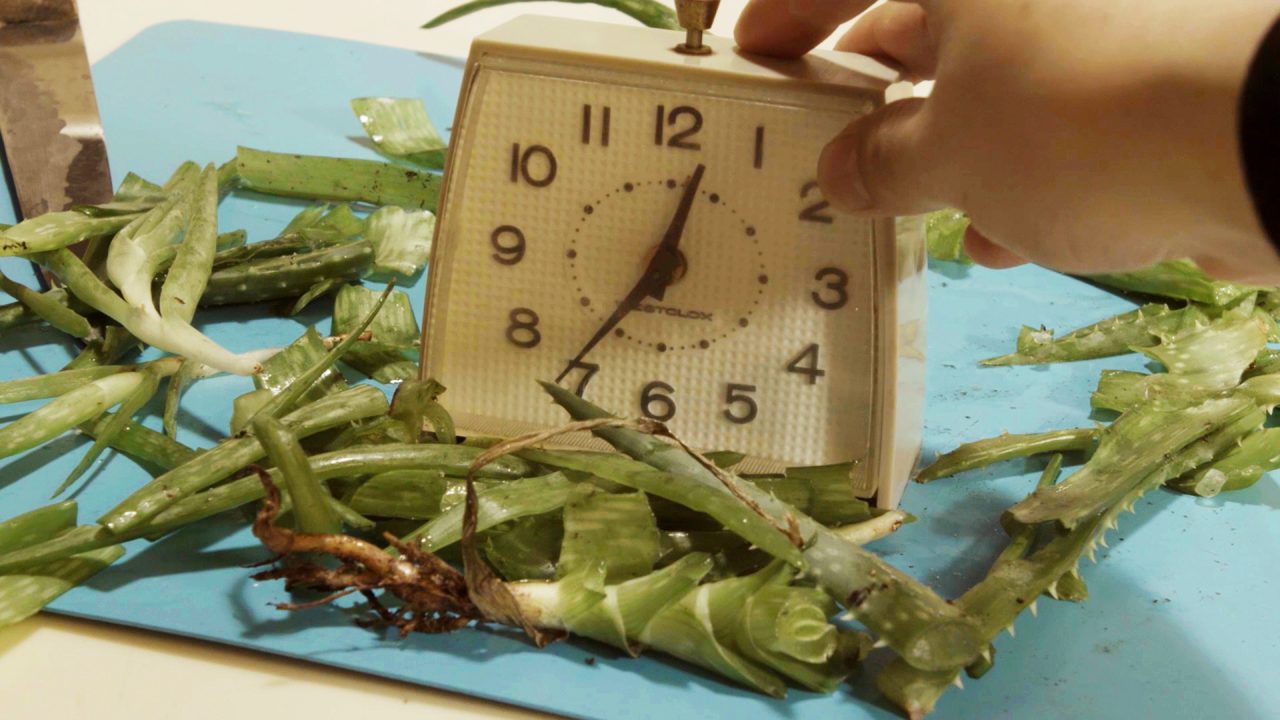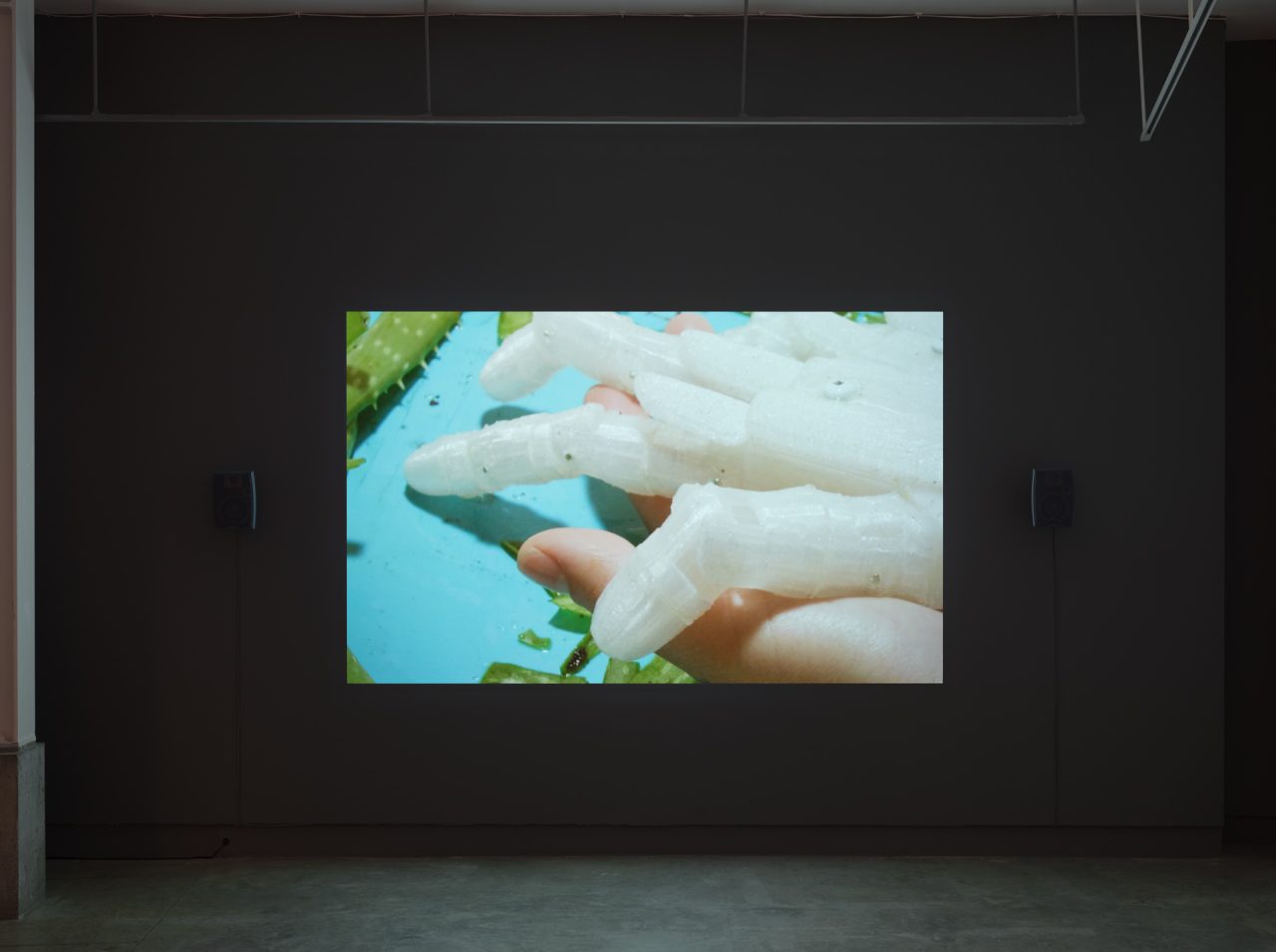15 Dec 2022
Reading Room: The Willful Plot
The Willful Plot brings together artists’ practices to expand the notion of the garden as a site of tension between wild and cultivated, temporal and perpetual, public and private, sovereign and colonized. Here, the garden is considered by the artists not only as a delineated patch of earth, but as a story and a will to drive that story to complicate the way in which cultures and individuals see themselves in relation to ecology, sociality, belief and possibility. It is an opportunity to look at human relationships with land, flora, fauna and their interrelatedness. In its willfulness, the resistance garden is a counter-site, a heterotopia for alternative cultivation and potential transformation. Artists include Derya Akay and Vivienne Bessette, Gabi Dao, Derek Jarman, Charmian Johnson, Glenn Lewis, Mike MacDonald, Rehab Nazzal and Dana Qaddah.
These sources include texts expanding on different notions of the garden and more-than-human relationships, as well as the political implications of thinking willfully, with and alongside. Following the introductory sources are pieces related to each artist’s practice.
Introduction
Sara Ahmed, “Willfulness as a Style of Politics,” in Willful Subjects (Durham: Duke University Press, 2014), 135-172.
Ahmed considers how willfulness can be considered a style of politics, both in terms of a political struggle to exist and one that can transform ways of existing. Expanding on the ways willfulness has been used as a technique of dismissal, Ahmed explores what thinking through this dismissal differently can offer.
Laurie Cluitmans, “On the Necessity of Art and Gardening: A Story in Four Parts,” in On the Necessity of Gardening: An ABC of Art, Botany and Cultivation (Netherlands: Valiz, 2022), 111-117.
With Donna Haraway’s notion of “Chthulucene” as a hopeful departure for relation-making during the Anthropocene, Cluitmans highlights the different ways artists have evoked the garden as a place and way for thinking and living through different notions of time, relationality and resurgence in changing times.
Jessa Gamble, “Ancient Gardens Persist in British Columbia’s Forests,” Hakai Magazine, June 9, 2021.
Gamble highlights the ways Indigenous people have cultivated food forests in their traditional and ancestral territories, and how these forest gardens continue to support and create more diverse ecosystems in spite of the effects of ongoing colonization.
Robin Wall Kimmerer, “Putting Down Roots,” in Braiding Sweetgrass: Indigenous Wisdom, Scientific Knowledge and the Teachings of Plants (Minneapolis: Milkweed Editions, 2013), 254-267.
Through planting sweetgrass, Kimmerer weaves together stories of place, language, identity, resistance and memory. She considers her grandfather and great-uncle’s experiences at Carlisle Residential School, near where she plants sweetgrass in this chapter, and different paths towards healing and reconciliation.
Jonathan Skinner, “Gardens of Resistance: Gilles Clément, New Poetics, and Future Landscapes: Translator’s Introduction to Gilles Clément,” Qui Parle 19, no. 2 (2011): 259–274.
In this introduction to Clément’s text, Skinner outlines the political and pedagogical foundations of Clément’s notion of “Gardens of Resistance,” informed from his long work as a gardener. Encouraging liveliness and adaptability against contained ecologies in traditional European gardens, Clément proposes ideas of the Garden in Movement, the Planetary Garden and the Third Landscape as models.
Derya Akay and Vivienne Bessette
http://www.gardendontcare.ca
http://www.lookingatthegardenfence.com/
Learn more about the projects Garden Didn’t Care and Looking at the Garden Fence, in which Derya Akay and Vivienne Bessette have both been involved.
Greta Hamilton, “Derya Akay, on Process, Labour and Time,” C : International Contemporary Art (Spring 2018): 32-37.
In this conversation with Derya Akay, Hamilton discusses labour, time and process in Akay’s art practice, cooking and gardening.
Gabi Dao
Steffanie Ling, “Inquiring Minds: Lawrence Abu Hamdan, Gabi Dao, Eitan Efrat, Sirah Foighel Brutmann, Henry Hills, Onyeka Igwe, Martina Melilli,” C magazine no. 143 (2019): 58.
Steffanie Ling discusses the ways in which Gabi Dao’s The Protagonists uses visual language of diasporic experience to disrupt empiricism and the archives of the colonizer.
Anna Lowenhaupt Tsing, “11: The Life of the Forest,” in The Mushroom at the End of the World: On the Possibility of Life in Capitalist Ruins. (Princeton: Princeton University Press, 2015), 154-163.
In this chapter, Tsing discusses disturbances, interspecies relationships and worldings through pine wilt nematodes. Rather than considering disturbance in a negative way, as it often is in the humanities, Tsing suggests thinking through disturbances through the lens of heterogeneity, and as a way to navigate precarious living.
Derek Jarman
Mark Hudson, “Derek Jarman: A Saint in the Garden,” Gagosian Quarterly, October 1, 2020.
Hudson considers the legacies of Jarman’s work and his relationship to British culture, particularly as seen through his work The Garden (1990).
Derek Jarman, Derek Jarman’s Garden (London: Thames and Hudson, 1996).
Consisting of photos and written reflections from the artist, this book follows the trajectory of Jarman’s garden, from its beginnings in 1986 to the end of his life.
Derek Jarman, Modern Nature (Minneapolis: University of Minnesota Press, 2009).
Following his diagnosis of being HIV positive in 1986, Jarman’s turn towards the garden offered a place of solace and reflection. Consisting of entries to his diary begun in 1989, Modern Nature at once celebrates queerness and all that lives, and laments the loss of a generation.
Charmian Johnson
Amy Gogarty, “Charmian Johnson,” Galleries West, June 14, 2021.
Gogarty discusses Charmian Johnson’s ceramics in conversation with her practice of botanical drawing, and in particular the sensitivity and slowness of looking that Johnson had throughout her work.
Glenn Lewis
Lucy Lippard, “Public Dreams,” in Glenn Lewis: Utopiary, Metaphorest and Bewilderness, Works from 1967-1993, ed. Karen Henry and Brice MacNeil (Burnaby: Burnaby Art Gallery, 1993), 29-43.
Lippard considers Glenn Lewis’s practice and ongoing interest in gardens alongside the multi-decade trajectory of ecological art in North America.
Mike MacDonald
Robin Metcalfe, Mike MacDonald’s Digital Garden (Halifax: Mount Saint Vincent University Art Gallery, 1997).
In this exhibition text, Metcalfe discusses MacDonald’s Digital Garden as it relates to plants, butterflies, medicine and healing.
Lisa Myers, “Collective Remembering Mike MacDonald’s Medicine and Butterfly Gardens,” October 21, 2021, Hooker Distinguished Visiting Scholar Lecture, McMaster University.
In this lecture, Lisa Myers considers video installations and Butterfly Gardens by Mike MacDonald, in particular how they relate to scale, what information is given or withheld, and legibility of the land.
Rehab Nazzal
Rehab Nazzal, “The Olive Tree and the Palestinian Struggle Against Settler-Colonialism,” Canada and Beyond 8 (2019): 87-93.
Nazzal presents an account of the Israeli settler-colonial encroachment into Palestinian land in the form of a written and visual essay focusing on the olive tree.
Ghada Sasa, ” Oppressive Pines: Uprooting Israeli Green Colonialism and Implanting Palestinian A’wna, Politics, October 8, 2022.
Sasa discusses the ways that green colonialism, and its relationship to Western environmentalism, are used as a green-washing tool by Israel towards Palestine, and the ways in which Palestinian environmentalisms provide resistance.
Emily Mourad Hanna, Katrine Gro Friborg and Mazin B. Qumsiyeh, “Temporal Change in Traditional Knowledge and use of Wild Plants in Artas, Palestine,” Palestine Exploration Quarterly 154, no. 2 (2022): 81-94.
Hanna, Friborg and Qumsiyeh discuss the close ties Palestinians have with traditional ecological knowledge of plants’ food and medicinal uses in their ancestral land.
Dana Qaddah
Chelsea Yuill, “Where Do We Fine Home in the Future? An interview with Dana Qaddah,” Reissue (2021). accessed Dec 8, 2022
In this interview with Chelsea Yuill, Qaddah reflects on complexities present in being abstracted from place, Arab futurism, storytelling, and personal and cultural archives of knowledge.
Image (above): Rehab Nazzal, Lifta, 2022. Courtesy the artist
Related
-
Exhibition
13 Jan – 16 Apr 2023
The Willful Plot

The Willful Plot brings together artists' practices to expand the notion of the garden as a site of tension between wild and cultivated, temporal and perpetual, public and private, sovereign and colonized. Here, the garden is considered by the artists not only as a delineated patch of earth, but as a story and a will to drive that story to complicate the way in which cultures and individuals see themselves in relation to ecology, sociality, belief and possibility. It is an opportunity to look at human relationships with land, flora, fauna and their interrelatedness. In its willfulness, the resistance garden is a counter-site, a heterotopia for alternative cultivation and potential transformation.
[more] -
Event
Sunday, 5 February 2023 at 2 PM
Tea with Glenn Lewis

Join Glenn Lewis for a discussion of his work in The Willful Plot along with curator Melanie O'Brian. Over five decades, Glenn Lewis has photographed and created gardens in an investigation of paradisial symbolism.
[more] -
Event
Wednesday 29 Mar 2023 at 1 pm
Lecture Series: What a seed does; or, tending to paradise, however you see it

Join us for a series of lectures at the Belkin. We invite Jane Wolff, Desirée Valaderes and Sara Jacobs to address The Willful Plot.
[more] -
Event
Wednesday, 12 Apr 2023 at 2 pm
Concert at the Belkin: The Willful Plot

Join us for a concert by the UBC Contemporary Players directed by Paolo Bortolussi and teaching assistant Ramsey Sadaka in a program that celebrates the Belkin’s current exhibition The Willful Plot.
[more]